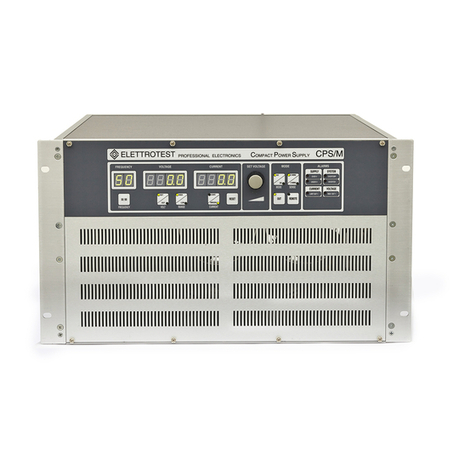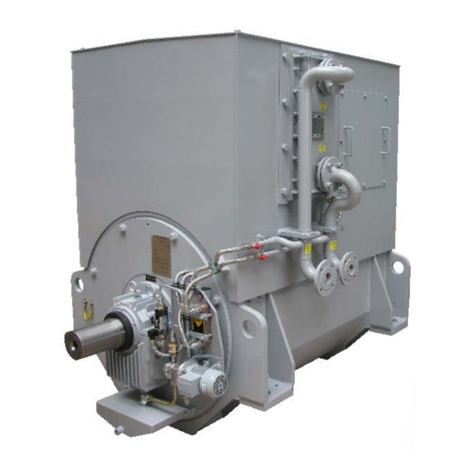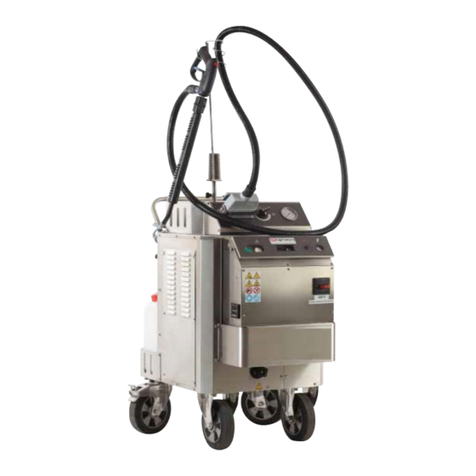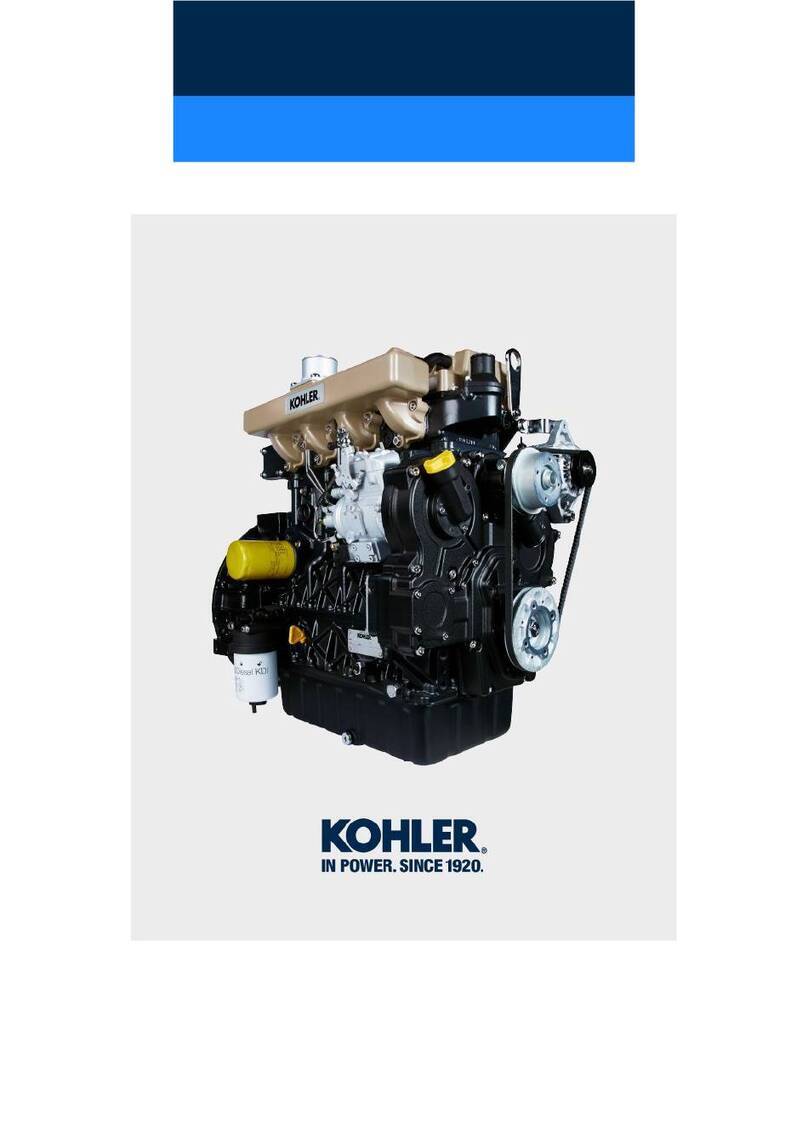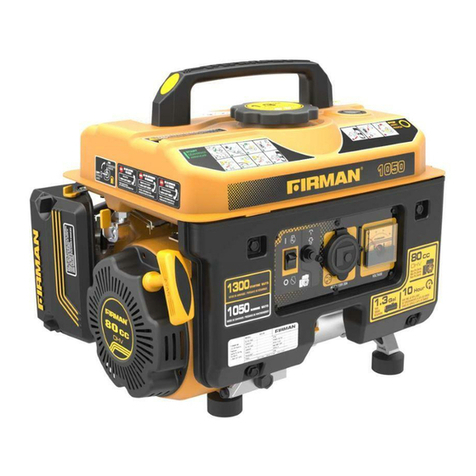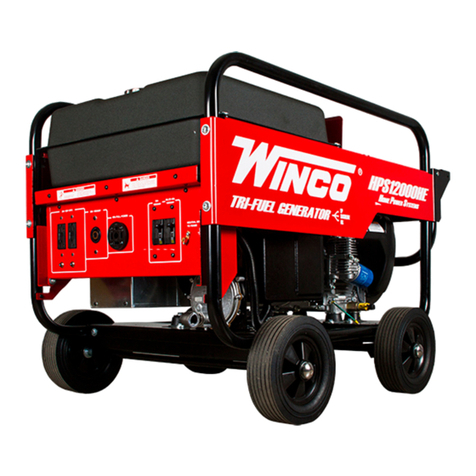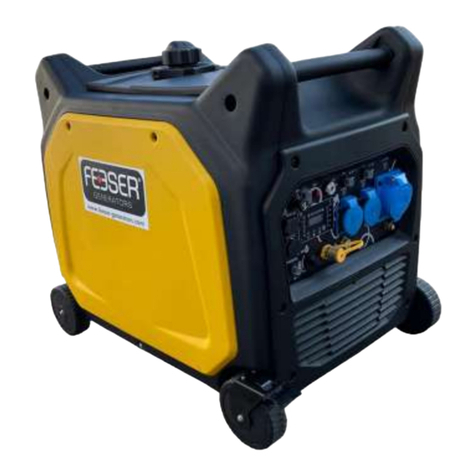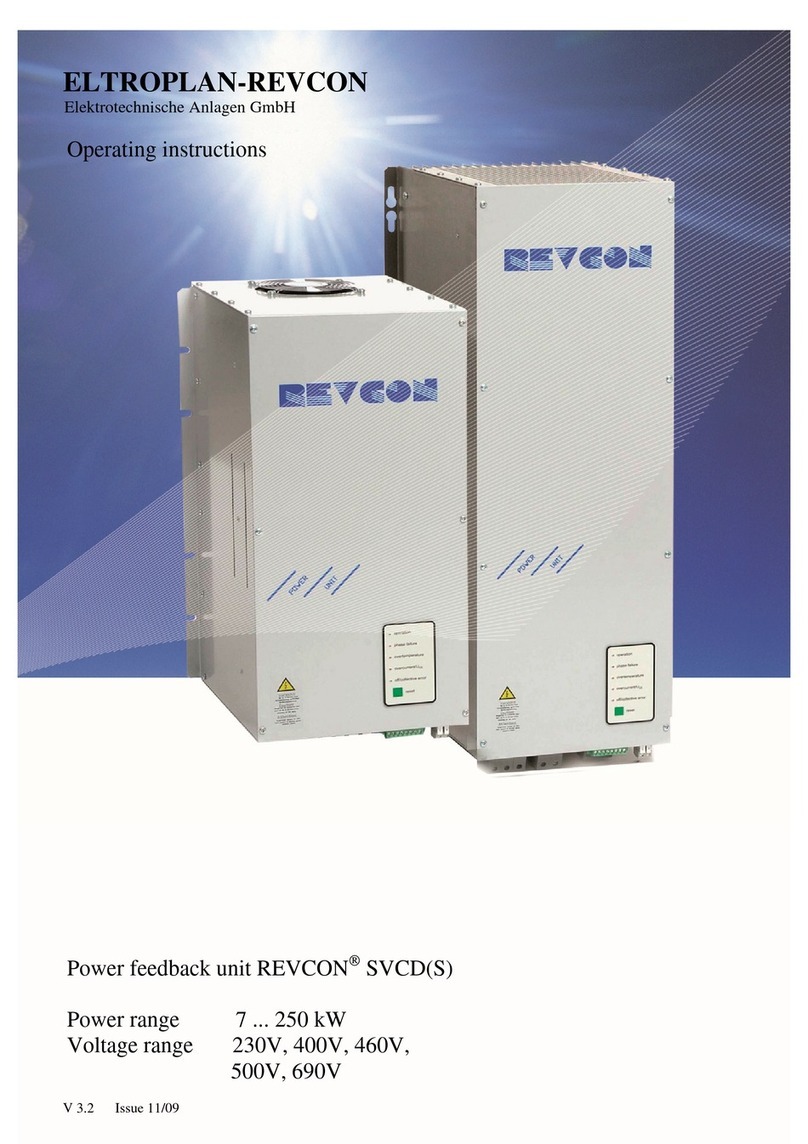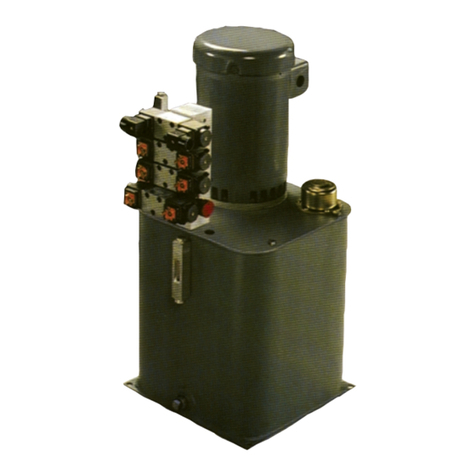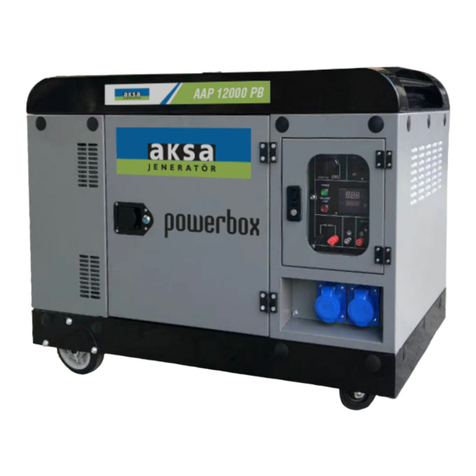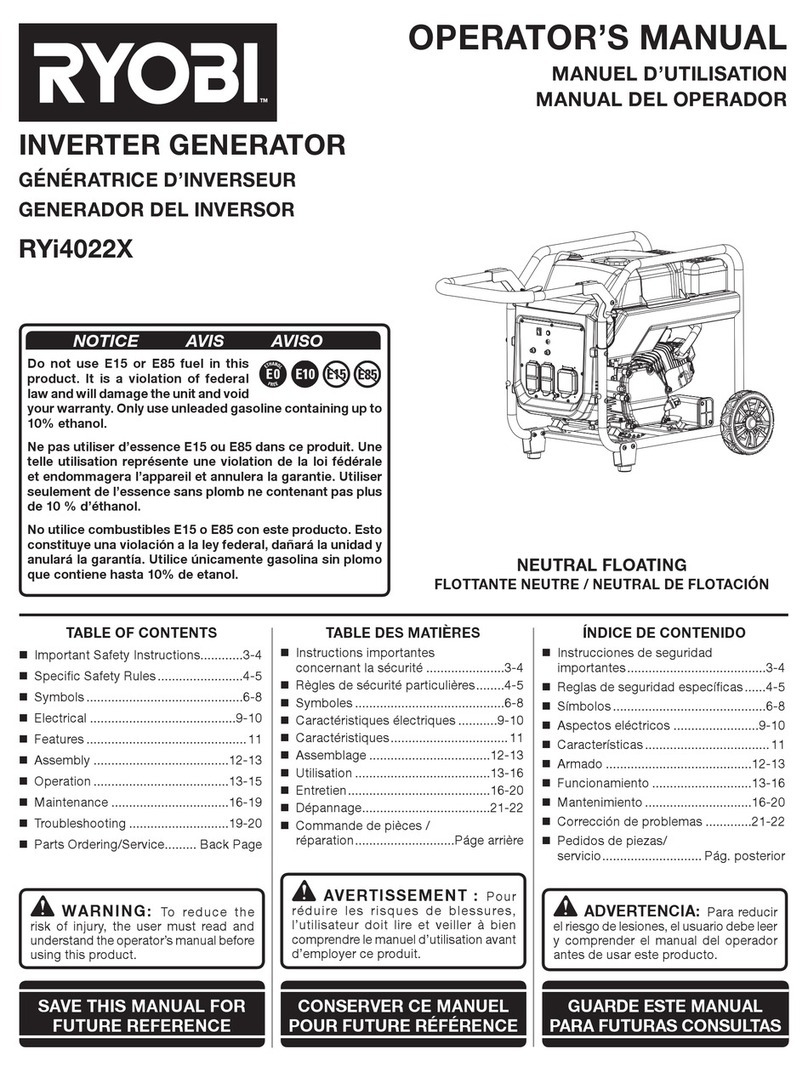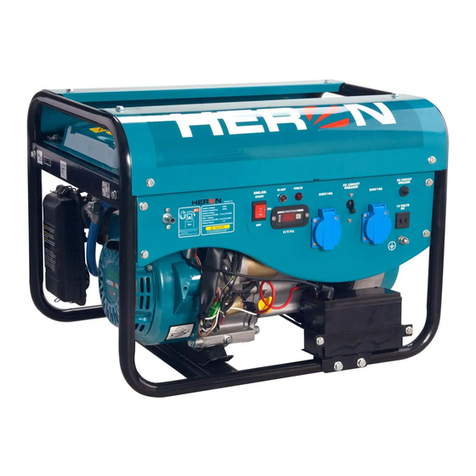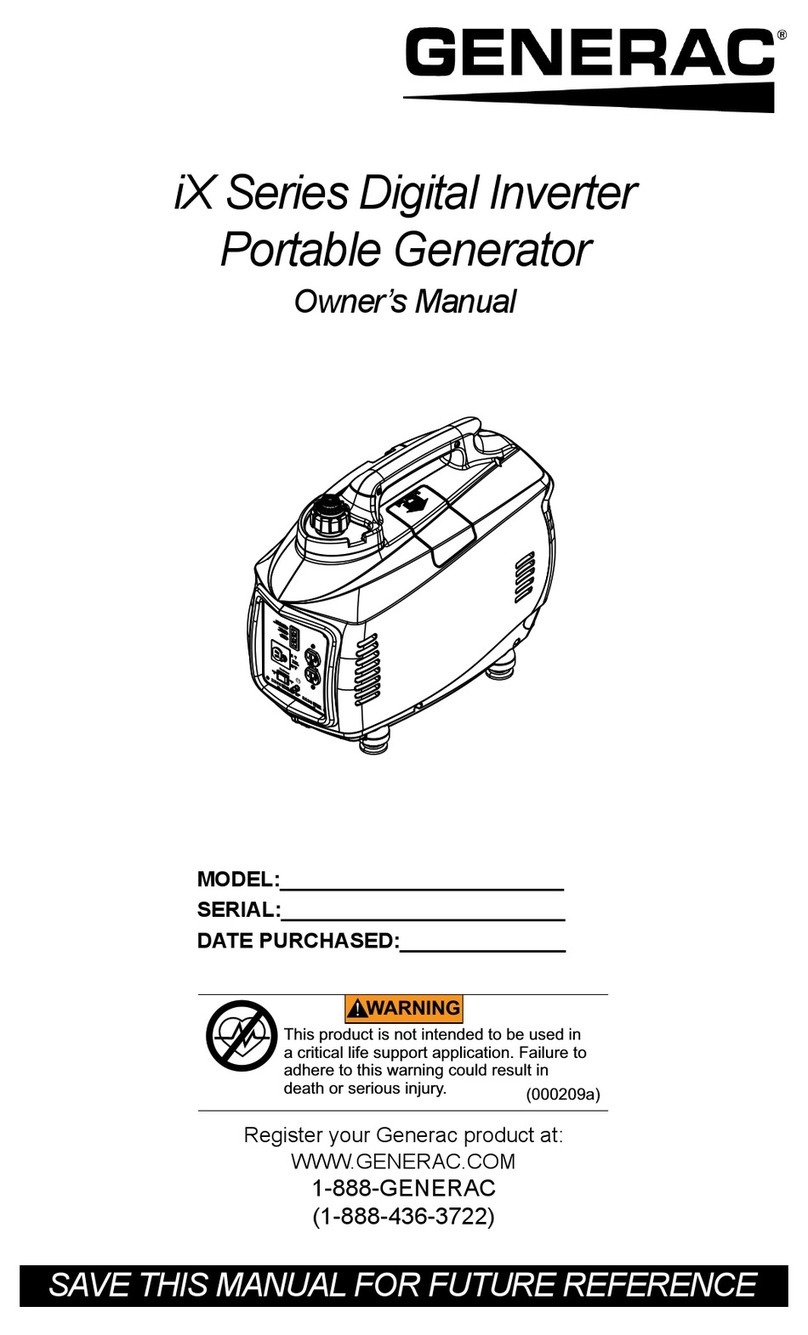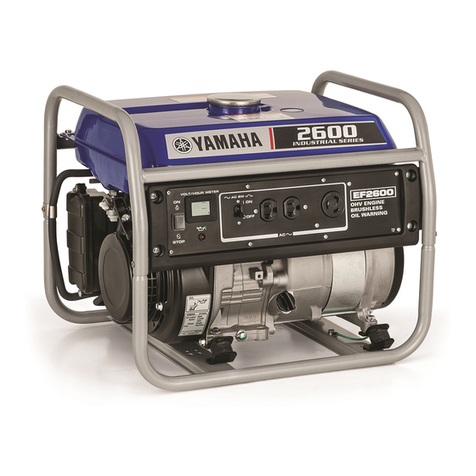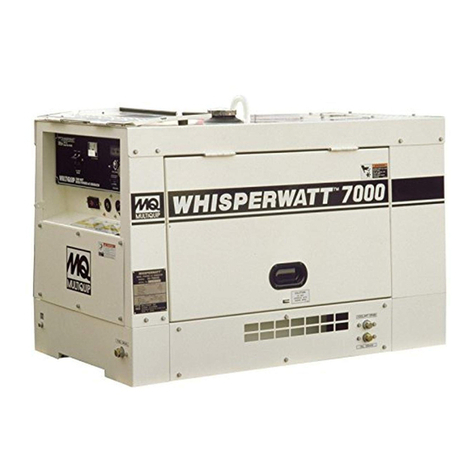Elettrotest RPS/M/1K User manual

USER MANUAL RPS/M - 62000582 Rel.2.0 –12/10/2018
RPS/M/1K
RPS/M/2.5K
RPS/M/5K
RPS/M/10K
USER MANUAL
MANUALE UTENTE
Sie haben Fragen oder wünschen eine Beratung? Angebotsanfrage unter 07121 / 51 50 50 oder über [email protected]
Distributed by:

1
USER MANUAL RPS/M - 62000582 Rel.2.0 –12/10/2018
SAFETY WARNINGS
The manufacturer urges users to read the user manual for our products before installation.
The installation must be carried out by qualified technical staff. The non-observance of the
warnings in this manual can cause electric shocks, even fatal ones.
Please find below some general safety warnings.
This equipment must be connected to the mains supply using the appropriate safety
devices. Please consult the relevant paragraph 2, in this manual.
RPS must be connected to safety ground through the apposite connections. The non-
observance or the degradation of this earth connection can lead to electric shocks, even
fatal ones. As regards the correct connection modes, please refer to the information
contained in paragraph 2.
Disconnect RPS from the mains before any work on the equipment and on the connected
power loads.
Before touching the load or the output connector make sure that the power supply on the
device has been disconnected for at least 5 minutes. This is the time necessary in order for
the capacitors inside the device to discharge. The non-observance of this discharge time
can lead to electric shocks, even fatal ones.
The output of RPS is not isolated respect to the main power supply and so NONE OF THE
TWO OUTPUT PHASES CAN BE CONNECTED TO THE GROUND.
Avoid heavy shocks to the equipment (especially during transport) or exposure to extreme
weather conditions.
Any damage to the product due to transportation, incorrect installation or improper use is
not covered by the guarantee supplied by the manufacturer.
Do not use the equipment in explosive environments or in the presence of dust, acids or
corrosive and/or inflammable gases.
Tampering with or dismantling any component in the equipment will void the warranty
automatically.
Do not operate or store under conditions where condensing may occur or where
conductive debris may enter in the case.
The manufacturer declines all responsibility for damage to people or things caused
by an improper use of its products.
ELECTRIC RISK
There are dangerous voltages inside RPS and over the output connector.
The non-observance of the warnings suggest in this manual can lead to electric
shocks, even fatal ones.
OVERHEATING RISK
In the case of a ventilation system failure, the metal parts of the inverter may reach
high temperatures (in some cases higher than 70°C).

2
USER MANUAL RPS/M - 62000582 Rel.2.0 –12/10/2018
DISPOSAL
INFORMATION FOR USERS ON THE CORRECT HANDLING OF WASTE
ELECTRICAL AND ELECTRONIC EQUIPMENT (WEEE)
In reference to European Union directive 2012/19/EU issued on 24 July 2012 and the related
national legislation, please note that:
WEEE cannot be disposed of as municipal waste and such waste must be collected and
disposed of separately;
the public or private waste collection systems defined by local legislation must be used. In
addition, the equipment can be returned to the manufacturer at the end of its working life
when buying new equipment;
the equipment may contain hazardous substances: the improper use or incorrect disposal
of such may have negative effects on human health and on the environment;
the symbol (crossed-out wheeled bin) shown on the product or on the packaging and on
the instruction sheet indicates that the equipment must be disposed of separately;
in the event of illegal disposal of electrical and electronic waste, the penalties are specified
by local waste disposal legislation.

3
USER MANUAL RPS/M - 62000582 Rel.2.0 –12/10/2018
INDEX
1. INTRODUCTION............................................................................................................................4
1.1. MAIN FEATURES ....................................................................................................................4
1.1.1. Output voltage ...............................................................................................................4
1.1.2. Output frequency...........................................................................................................4
1.1.3. User interface.................................................................................................................4
1.1.4. General performances ...................................................................................................5
1.1.5. General specifications....................................................................................................5
1.2. MODELS.................................................................................................................................5
2. INSTALLATION ..............................................................................................................................6
2.1. GENERAL NOTES....................................................................................................................6
2.1.1. RPS/M/1K.......................................................................................................................6
2.1.2. RPS/M/2K5 AND RPS/M/5K ...........................................................................................8
2.2. FUSES.....................................................................................................................................9
2.3. RCD PROTECTION ..................................................................................................................9
2.4. MAGNETO-THERMAL PROTECTION ......................................................................................9
2.5. WIRING DIAGRAM...............................................................................................................10
2.5.1. Single phase device ......................................................................................................10
2.5.2. Three-phase device......................................................................................................10
2.6. POWER ON ..........................................................................................................................10
3. FUNCTIONS ................................................................................................................................11
3.1. VOLTAGE FEEDBACK............................................................................................................11
3.2. MAXIMUM OUTPUT CURRENT............................................................................................11
3.2.1. RPS/M/1K.....................................................................................................................11
3.2.2. RPS/M/2K5...................................................................................................................12
3.2.3. RPS/M/5K.....................................................................................................................12
3.2.4. RPS/M/10K...................................................................................................................12
3.3. CURRENT LIMITATION MODE..............................................................................................13
3.3.1. Peak Limitation Mode..................................................................................................13
3.3.2. Average Limitation Mode ............................................................................................14
3.3.3. Limitation Setting.........................................................................................................15
3.4. OUTPUT SWITCH .................................................................................................................15
4. REMOTE CONTROL.....................................................................................................................16
4.1. SERIAL REMOTE CONTROL ..................................................................................................16
4.1.1. Control software ..........................................................................................................16
4.1.2. Serial cable ...................................................................................................................16
4.2. ANALOG REMOTE CONTROL ...............................................................................................16
4.2.1. Analog interface...........................................................................................................16
4.2.2. Performances ...............................................................................................................18
5. ALARMS......................................................................................................................................19
5.1. SUPPLY ALARMS ..................................................................................................................19
5.2. SYSTEM ALARMS .................................................................................................................19
5.3. CURRENT ALARM.................................................................................................................19
5.4. VOLTAGE ALARM.................................................................................................................20
6. TECHNICAL SPECIFICATIONS ......................................................................................................21
6.1. DATA SHEET.........................................................................................................................21
6.2. MECHANICAL DRAWINGS....................................................................................................22
6.2.1. RPS/M/1K.....................................................................................................................22
6.2.2. RPS/M/2K5 AND RPS/M/5K .........................................................................................23

4
USER MANUAL RPS/M - 62000582 Rel.2.0 –12/10/2018
1. INTRODUCTION
RPS is a power source that supplies a sinusoidal and stable voltage. Its output voltage is adjustable
in frequency and amplitude.
1.1. MAIN FEATURES
1.1.1. Output voltage
The output voltage is guaranteed perfectly sinusoidal, with a distortion of less than 0.3%
regardless of the load. The value of output voltage is kept perfectly stable within 0.1% regardless
of the load.
RPS is also able to compensate for possible voltage drops on the output wires, ensuring that the
exact required voltage is provided to the load.
The load that RPS is able to drive can vary from a pure capacity to a pure inductance, but also up
to non symmetrical current loads, as, for instance, a single half wave rectifier.
The output voltage is adjustable with continuity from zero to full scale. Furthermore, RPS is
capable to keep the voltage stable with time variable loads, as for example the pulsating loads. In
fact RPS recovers the distortion of the waveform within 0.3% and the amplitude of the voltage
within 0.1% in less than half period.
Furthermore, RPS can bear a short-circuit for an indefinite time without suffering any
consequence.
THE OUTPUT OF RPS IS NOT ISOLATED RESPECT TO THE MAIN POWER SUPPLY
NONE OF THE TWO OUTPUT PHASES CAN BE CONNECTED TO THE GROUND
1.1.2. Output frequency
RPS allows the regulation of the output frequency from 10 Hz to 80 Hz. The output frequency can
be adjusted with continuity into the regulation range and it has a stability of 0.01% regards to set
frequency.
1.1.3. User interface
RPS can be remotely controlled both via analog interface and via serial communication. RPS allows
various usage selections: wires drop compensation, working frequency, output DC, output AC. RPS
gives the user clear information on the status of the output. It is monitored both the set voltage
and the set frequency. The output voltage can be remotely read with a precision of 0.3% f.s..
The user is also warned in case of overcurrent obtainable by the RPS, or in case of high loss on the
wires, that should not exceed 5% of the set voltage.

5
USER MANUAL RPS/M - 62000582 Rel.2.0 –12/10/2018
1.1.4. General performances
All the following features are valid in the normal operation mode. They are not valid during the
output current limitation.
(1)With linear load.
1.1.5. General specifications
PARAMETER
VALUE
Output frequency range (1)
DC/ 10Hz - 80Hz
Frequency resolution
0.02Hz
Frequency precision and time stability
100ppm
Output voltage at maximum power (2)
300V
Output voltage resolution
0.025% f.s. (12 bit f.s.)
Operating temperature
0°C - 35°C
(1) Frequency can be increased up to 320 Hz at lower performance than the nominal.
(2) The RPS works at constant output current so if you decrease the voltage you decrease also the
maximum power.
1.2. MODELS
RPS models differ in rated power and in supply mode (Single Phase or Three-Phase with neutral).
MODELS
NOMINAL
POWER
SUPPLY
VOLTAGE
WEIGHT
INPUT
CURRENT
DIMENSIONS
A, L, P mm
RPS/M/1K
1.000 VA
230Vac ±10%
1PH
12 kg
8.5A
2U : 84 TE : 440
RPS/M/2K5
2.500 VA
230Vac ±10%
1PH
25 kg
17A
4U : 84 TE : 540
RPS/M/5K
5.000 VA
230Vac ±10%
1PH
25 kg
35A
4U : 84 TE : 540
RPS/M/10K
10.000 VA
400Vac ±10%
3PH+N
48 Kg
24A phase
41A neutral
6U : 84 TE : 540
PARAMETER
VALUE
Distortion of the output waveform (1)
<0.3%
Stability of the output voltage
<0.1%
Accuracy of the output voltage
<0.5%
Recovery-time of the output waveform
<10ms
Recovery-time of the output voltage
<10ms
Maximum compensated drop on wires
5% f.s.
Recovery-time of drop on wires
<200ms

6
USER MANUAL RPS/M - 62000582 Rel.2.0 –12/10/2018
2. INSTALLATION
The output of RPS is NOT isolated respect to the main power supply.
NONE OF THE TWO OUTPUT PHASES CAN BE CONNECTED TO THE GROUND.
2.1. GENERAL NOTES
2.1.1. RPS/M/1K
Connect one supplying cable 2PH+G (standard IEC cable) of suitable section (minimum
section 3x1.5 mm2).
Check that Live and Neutral cables are correctly connected to the respective phases of the
supply and not reversed.
Protect the input line with the circuit breakers presented in paragraph 2 (INSTALLATION).
Connect load cables to the output connector. Use an appropriate section according to the
maximum load tolerable by the RPS.
Put the ferrite core on the load cable close to RPS.
Optionally: connect the sense wires.
Keep front area free for ventilation.
When RPS is mounted inside a cabinet you must install a forced ventilation in order to
expel the hot air.
Never lay power cables (including the electrical cables) and probe signal cables in the same
conduits.
Cleaning the device: when cleaning the device do not use ethyl alcohol, hydrocarbons
(petrol), water, detergents, ammonia and derivatives. Use only a dry cloth.
INPUT CONNECTOR
OUTPUT CONNECTOR
FERRITE BEAD

7
USER MANUAL RPS/M - 62000582 Rel.2.0 –12/10/2018
INDEX
DESCRIPTION
1
Serial 9 poles connector
2
Power output connector
3
Output air
4
Power input connector
5
Earth connector
6
Analog port
7
Input air

8
USER MANUAL RPS/M - 62000582 Rel.2.0 –12/10/2018
2.1.2. RPS/M/2K5 AND RPS/M/5K
Connect one supplying cable 2PH+G of suitable section (minimum section 3x4 mm2).
Protect the input line with the circuit breakers presented in paragraph 2 (INSTALLATION).
Connect load cables to the output connector. Use an appropriate sections according to the
maximum load tolerable by the RPS.
Optionally: connect the sense wires.
Keep front area free for ventilation.
When RPS is mounted inside a cabinet you must install a forced ventilation in order to
expel the hot air.
Never lay power cables (including the electrical cables) and probe signal cables in the same
conduits.
Cleaning the device: when cleaning the device do not use ethyl alcohol, hydrocarbons
(petrol), water, detergents, ammonia and derivatives. Use only a dry cloth.
INDICE
DESCRIZIONE
1
Switch
2
Fuse
3
Input air
4
Serial 9 poles connector
5
Analog port
6
Power output connector
7
Sense connector
8
Power input connector
9
Earth connector
10
Output air

9
USER MANUAL RPS/M - 62000582 Rel.2.0 –12/10/2018
2.2. FUSES
Fuses can be used to protect power line of the RPS. It's recommended to use delayed fuses
according to the nominal input characteristic (see section 6.1).
2.3. RCD PROTECTION
A residual-current device (RCD), or residual-current circuit breaker (RCCB), is a device that
instantly breaks an electric circuit to prevent serious harm from an ongoing electric shock.
It's recommended to use B type RCD with a earth leakage current of 30 mA according to the
nominal input characteristic (see section 6.1).
2.4. MAGNETO-THERMAL PROTECTION
The Magneto-thermal circuit breaker protect the input line from short circuits. Generally depends
on the load and on the connection (section and length of the cable).
It is recommended to use a magneto-thermal protection with type C curve according to the
nominal input characteristic (see section 6.1).

10
USER MANUAL RPS/M - 62000582 Rel.2.0 –12/10/2018
2.5. WIRING DIAGRAM
2.5.1. Single phase device
2.5.2. Three-phase device
2.6. POWER ON
Some RPS models don't have power on switch (see section 2.1).In this case when the input
connector receives power, RPS turns on. In any case, RPS needs (after power on) less than 10
seconds to be ready.

11
USER MANUAL RPS/M - 62000582 Rel.2.0 –12/10/2018
3. FUNCTIONS
3.1. VOLTAGE FEEDBACK
The output voltage stabilization works the same in both the 2-wire and in the 4-wire output
configurations.
The 4-wire configuration can be used with a long-distance outlet and can compensate the voltage
drop due to cable connections.
To work in 4WIRE configuration, you must perform the wiring as shown in the figure below and
set "4WIRE" mode via remote control.
RPS compensates the voltage drop on the connections up to 5% of the set voltage.
To prevent any overheating of the line, when the limit has been exceeded, RPS does not guarantee
that the value of output voltage is equal to the voltage set. In this case it displays an error signal
(see the paragraph VOLTAGE ALARM).
3.2. MAXIMUM OUTPUT CURRENT
3.2.1. RPS/M/1K
CONTINUOUS OPERATION
MAX CORRENT
MAX POWER
PORT
DC
50Hz
60Hz
LOAD
PORT
DC
50Hz
60Hz
LOAD
300
-
2,7 A
2,6 A
CAP.
300
-
811 VA
768 VA
CAP.
300
-
4,1 A
4,3 A
IND.
300
-
1235 VA
1277 VA
IND.
300
3,4 A
3,3 A
3,3 A
RES.
300
1020 VA
1001 VA
991 VA
RES.
IMPULSIVE OPERATION (MAX 3 SECONDS)
MAX CORRENT
MAX POWER
PORT
DC
50Hz
60Hz
LOAD
PORT
DC
50Hz
60Hz
LOAD
300
-
6,2 A
6,1 A
CAP.
300
-
1862 VA
1820 VA
CAP.
300
-
7,6 A
7,8 A
IND.
300
-
1235 VA
2329 VA
IND.
300
6,9 A
6,9 A
6,9 A
RES.
300
2064 VA
2064 VA
2059 VA
RES.

12
USER MANUAL RPS/M - 62000582 Rel.2.0 –12/10/2018
3.2.2. RPS/M/2K5
CONTINUOUS OPERATION
MAX CORRENT
MAX POWER
PORT
DC
50Hz
60Hz
LOAD
PORT
DC
50Hz
60Hz
LOAD
300
-
6,2 A
5,6 A
CAP.
300
-
1858 VA
1688 VA
CAP.
300
-
11,8 A
12,4 A
IND.
300
-
3554 VA
3724 VA
IND.
300
9 A
8,6 A
8,4 A
RES.
300
2706 VA
2570 VA
2507 VA
RES.
IMPULSIVE OPERATION (MAX 3 SECONDS)
MAX CORRENT
MAX POWER
PORT
DC
50Hz
60Hz
LOAD
PORT
DC
50Hz
60Hz
LOAD
300
-
14,3A
13,8 A
CAP.
300
-
4301 VA
4131 VA
CAP.
300
-
20,0 A
20,6 A
IND.
300
-
5997 VA
6167 VA
IND.
300
18,0 A
16,9 A
16,8 A
RES.
300
5149 VA
5079 VA
5047 VA
RES.
3.2.3. RPS/M/5K
CONTINUOUS OPERATION
MAX CORRENT
MAX POWER
PORT
DC
50Hz
60Hz
LOAD
PORT
DC
50Hz
60Hz
LOAD
300
-
13,9 A
13,3 A
CAP.
300
-
4162 VA
3992 VA
CAP.
300
-
19,5 A
20,1 A
IND.
300
-
5858 VA
6028 VA
IND.
300
16,7 A
16,5 A
16,4 A
RES.
300
5016 VA
4938 VA
4906 VA
RES.
IMPULSIVE OPERATION (MAX 3 SECONDS)
MAX CURRENT
MAX POWER
PORT
DC
50Hz
60Hz
LOAD
PORT
DC
50Hz
60Hz
LOAD
300
-
30,5 A
29,9 A
CAP.
300
-
9151 VA
8981 VA
CAP.
300
-
36,2 A
36,7 A
IND.
300
-
10847 VA
11017 VA
IND.
300
33,0 A
33,2 A
33,2 A
RES.
300
10000 VA
9963 VA
9947 VA
RES.
3.2.4. RPS/M/10K
CONTINUOUS OPERATION
MAX CORRENT
MAX POWER
PORT
DC
50Hz
60Hz
LOAD
PORT
DC
50Hz
60Hz
LOAD
300
-
23,8 A
22,4 A
CAP.
300
-
7152 VA
6728 VA
CAP.
300
-
38,0 A
39,4 A
IND.
300
-
11394 VA
11818 VA
IND.
300
30,9 A
30,1 A
29,7 A
RES.
300
9273 VA
9027 VA
8917 VA
RES.
IMPULSIVE OPERATION (MAX 3 SECONDS)
MAX CURRENT
MAX POWER
PORT
DC
50Hz
60Hz
LOAD
PORT
DC
50Hz
60Hz
LOAD
300
-
57,3 A
55,8 A
CAP.
300
-
17177 VA
16753 VA
CAP.
300
-
71,4 A
72,8 A
IND.
300
-
21418 VA
21842 VA
IND.
300
64,3 A
63,9 A
63,8 A
RES.
300
19298 VA
19181 VA
19129 VA
RES.

13
USER MANUAL RPS/M - 62000582 Rel.2.0 –12/10/2018
3.3. CURRENT LIMITATION MODE
3.3.1. Peak Limitation Mode
Output current is limited instantaneously without delay at the limitation set. Only an initial
transient peak remains, due to the output capacitor discharge.

14
USER MANUAL RPS/M - 62000582 Rel.2.0 –12/10/2018
3.3.2. Average Limitation Mode
Output current is limited with a linear trend during a specific time (tAVG) in order to reach the
limitation set. TAVG time depends on how much the set average limit is exceeded (see chart below).
Limitations is enable both AC and DC mode

15
USER MANUAL RPS/M - 62000582 Rel.2.0 –12/10/2018
3.3.3. Limitation Setting
Both peak and average limitation can be set via serial command. Limits must be included in the
range [500,4095]. Values less than 500 are considered 500 by default (minimum value).
The factory values for both limitations are 4095. For further information please read the
programming manual.
3.4. OUTPUT SWITCH
It’s possible to open or close the output switch both by serial command and digital input. Before
opening the switch, the output voltage is switched to zero to safeguard the switch. Similarly, the
closing is done with zero voltage. Afterwards, the output will reach the set value through a voltage
ramp (set via serial commands).
The turn off of the output switch does not allow operations on the EUT connections.

16
USER MANUAL RPS/M - 62000582 Rel.2.0 –12/10/2018
WIRING CONNESSION
PC RPS
DB9 Poles Female DB9 Poles Male
2 2
3 3
5 5
4. REMOTE CONTROL
4.1. SERIAL REMOTE CONTROL
4.1.1. Control software
RPS can be remotely controlled via RS232 communication according to a copyrighted free
protocol. For further details on protocol, see the specific manual.
Parameters for serial connection:
BAUD RATE: 19200 (in standard version)
DATA BITS: 8
STOP BITS: 1
4.1.2. Serial cable
Use a serial cable according to the standard defined in the figure below.
4.2. ANALOG REMOTE CONTROL
4.2.1. Analog interface
RPS can be controlled by analog interface:

17
USER MANUAL RPS/M - 62000582 Rel.2.0 –12/10/2018
All the signals in the analog interface (both analog and digital) are referred to GND (9th pin of the
connector).
Input circuit of “Ref analog” signal
Pin
Nome
Descrizione
Livelli
1
+5V
Power supply (Max 40mA)
Respect to GND
2
Ref. analog
Pwm or analog input
0-10V (respect to GND)
3
50/60 Hz
Digital input
0V (50Hz) –5V (60Hz)
4
Output relay
Digital input
0V (Off) –5V (On)
5
DC/AC
Digital input
0V (AC) –5V (DC)
6
Alarm
Digital output
0V (no alarm) 5V (alarm)
7
Synchronism
Digital output
Square waveform synchronized to
output voltage (0-5V).
8
Enable
Digital output
0V (not enabled) 5V (enabled)
9
GND
Ground
Digital input circuit
Digital output circuit

18
USER MANUAL RPS/M - 62000582 Rel.2.0 –12/10/2018
4.2.2. Performances
Delay time between analog input and RPS output is about 200ms.
DELAY TIME IN DC MODE
DELAY TIME IN AC MODE

19
USER MANUAL RPS/M - 62000582 Rel.2.0 –12/10/2018
5. ALARMS
5.1. SUPPLY ALARMS
RPS can work with ±10% network voltage variations. If these RPS limits are exceeded, the RPS
stops and a special alarm is generated. In this case RPS can be unlocked via serial command
(SOFTWARE RESET) or by turning the machine off and on again.
If the supply voltage is too low RPS stops and outputs UNDERVOLTAGE alarm.
If the supply voltage is too high RPS stops and outputs OVERVOLTAGE alarm.
If the supply phases have been inverted, both the UNDERVOLTAGE and OVERVOLTAGE alarms
are generated. Check section 2.1 and invert the phases on the input connector.
5.2. SYSTEM ALARMS
Also in case of hardware failure of the inner inverter, RPS stops and generates a special alarm
(INVERTER). To reset RPS use the same method described for supply alarms. In case of high
temperature inside RPS, it stops and a special error is generated (OVERTEMP).
To reset the machine, turn it off and wait for a few minutes to cool the system. After that turn it
on again.
5.3. CURRENT ALARM
RPS controls the output current. RPS therefore allows for an output short circuit for an indefinite
time. In the case of loads that need a current higher than the rated one, RPS operates an output
current limitation. When this limitation occurs, a special alarm is generated (LIMIT OUTX).
In case of current limitation, the output sinusoidal wave is not guaranteed. Output can present
an harmonic distortion.
Nonlinear loads that require a power less than the maximum admitted from RPS with a very high
crest factor current can generate a current limitation as well.
If RPS is operating in current limitation, it maintains the RMS output voltage equal to the set value
until a special voltage alarm is generated (see VOLTAGE ALARM).
This manual suits for next models
3
Table of contents
Languages:
Other Elettrotest Portable Generator manuals

